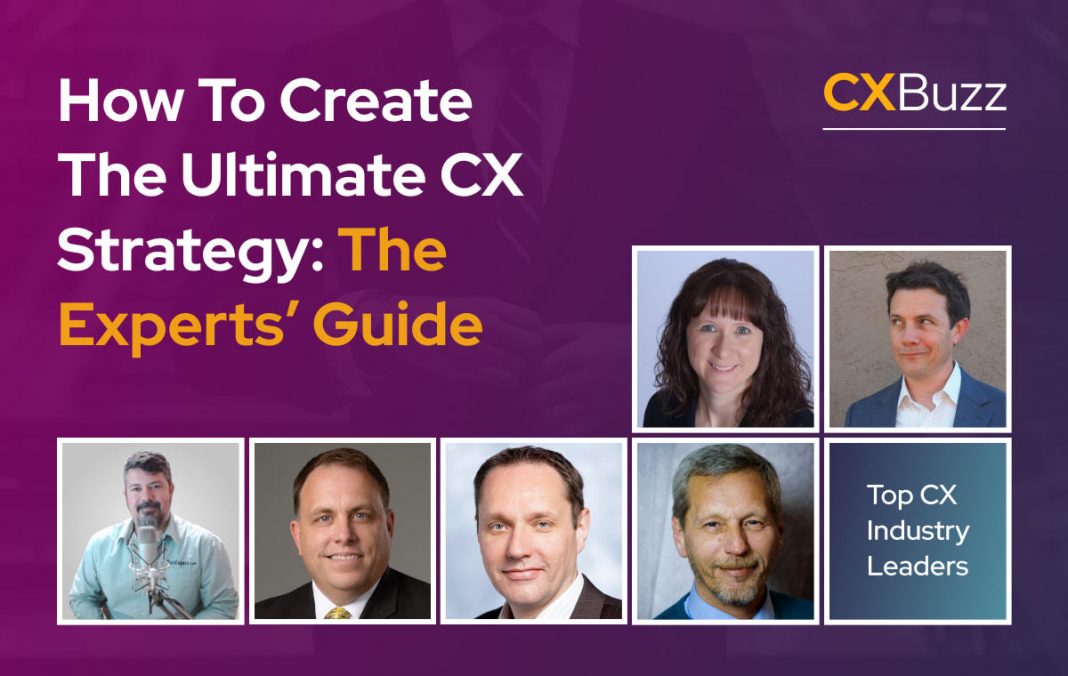When it comes to customer experience (CX) strategy, most brands focus on just two things: (1) the product or service they offer and (2) customer support. According to the traditional school of thought, if your product/service and customer support are good enough, then you have certainly a winning customer experience strategy: What else could customers expect from the brand?
Wrong.
Nowadays, with so many different factors impacting the success of a business, these two points are significant, but they are not enough to drive your customer experience strategy. What we forget sometimes is that the ongoing digital transformation is creating lasting shifts in the market. The market is therefore becoming increasingly more advanced, competitive, and demanding.
Gone are the days when meeting the customer’s expectations was easy, because the expectations were simple. Today, in fact, the customers are more aware and have better resources to access, compare and analyze your product/service in-and-out, leave reviews that are not sugar-coated and at times even point out the minutest flaw without hesitation.
So, which other factors govern the customer experience strategy in today’s time? Let’s run through the ultimate customer experience checklist, revealed by none other than industry experts in a series of interviews with CXBuzz.
Seeking Answers Is the Key
They say that before exploring the outer-world, go deep inside if you really want to understand the basics of anything. That’s equally applicable to customer experience strategy. To dive deep inside the web to create a perfect customer experience – ask the relevant questions and while you seek the answers to them, your customer experience strategy is being drafted simultaneously.
Gart Capote, author and expert in process management and customer experience, told CXBuzz that the perfect CX strategy checklist should have the following fundamental questions:
“• Who is the customer?
- What are the jobs the customer is trying to do?
- From the customer’s point of view, what can be considered a success?
- Are our solutions designed to be customer-centric?
- Have we validated all the changes we’ll have to take care of for the solution to be successful?
- How do we interact with our customers during their journey?
- All the channels and touchpoints are operationally connected to capable business processes?
These are questions we all should consider when trying to design a good CX checklist.”
Capote further emphasized the role of actions to seek the answers, for which many organizations may not have a ready-framework.
“Obviously, to answer it we’ll need to take a lot of actions, and many of these actions, probably, will find a not-so-ready organizational scenery when considering the available professional competencies and behaviors. And this should be understood as a growth opportunity for the organization.
Take It from Your Customers
After looking inwards, it’s time to look outwards and speak with your customers. Asking your customers for their opinion can further strengthen your CX strategy. Lars Kesler, Chief Experience Officer, Huawei Technologies, put it out more clearly:
“If you have a clear Voice of Customer (VOC) Management in place, then automatically, your customer’s feedback will write your checklist for a good customer experience.”
Kesler added that when your customer says something, it is crucial to pay attention to it.
“The customers always tell you what needs to be done – the only question is, do you really listen?
In fact, a permanently high customer experience means hard and very systematic work throughout the entire company. It is work on the mindset of all employees, on the brand, the products, and the processes. This work hurts most of the time because you learn a lot about yourself, your company, and your customers.”
What could be a more wonderful way of creating your CX strategy? However, you surely need to have a good framework of guarantee to keep your position among customers always on top and your CX strategy in place. Jeff Toister, a customer service expert and published author, explained it in detail to CXBuzz.
Framework of Guarantee
Here is what Jeff Toister shared with CXBuzz:
“I recommend using the framework of a guarantee to help companies create an effective customer experience strategy.
It starts with understanding the problem your customer is trying to solve. Customers don’t really buy a product or service. They buy solutions to their problems. For example, people buy from Amazon because they need to buy something and get it quickly and conveniently.
Once you understand what problem your customer is trying to solve, you can offer a guarantee. This has three components.
The first is a promise to solve the customer’s problem. This provides assurance to prospective customers and helps you win their initial business. For instance, Amazon tells you exactly when you can expect to receive an item you order.
The second element is taking action to keep your promises. Companies don’t spend enough time obsessing about this. Executives often declare something and then just hope for the best. Amazon has the biggest share of the e-commerce market because as a company it never stops trying to improve its order accuracy and delivery efficiency.
The third element is a recovery plan. With an experience guarantee, you must have a way to restore trust if something goes wrong. For instance, Amazon has a very simple returns process and has even started allowing customers to keep inexpensive items they wanted to return to help customers avoid the hassle. (Of course, this also helps Amazon save on returns processing costs.)
I outline this approach in my new book, The Guaranteed Customer Experience.”
Toister’s framework idea is one of the best solutions to those brands who struggle to maintain a long-term healthy relationship with their customers. If you wish to win the trust of the customer, you have to work upon the promises you have made to your customers regarding your product/services. Failing to keep words may result in a huge reputation and revenue loss in the long run.
Eric Wilson, Director of the Thought Leadership Institute of Business Forecasting, spoke to us about the importance of transparency and communication:
“Yes, it is important to build a strategy to go from order to shipping within 72 hours. Yes, it is good to have a strategy for post-sales follow-ups and engagement. But what I have found is most important is doing what you say. Working with one company that was a make-to-order environment that was migrating to online commerce we found people did not mind if they had to wait a week if we still delivered when we said it would and followed through with what we said we would do. Ultimately transparency and communication are key.”
Wilson also emphasized the significance of engagement and service, two other factors in his ultimate CX strategy checklist.
“With the migration of consumers from brick-and-mortar to online commerce there is a growing need for engagement and connection. I would put at the top of my checklist that focus. Companies typically encounter customers on multiple channels: physical, phone or email, and digitally online. Up until now, most probably prioritized efficiency — transitioning human interactions where possible to digital or automated ones. The irony now that more is going digital, we may need top\ focus back on taking the digital experience and making it feel more physical with more actual human interactions. Now putting on my supply chain hat, the other things I would add to my checklist is service and even more importantly doing what you say you will do.”
That certainly makes an effective CX strategy. However, how many times brands have felt the need to make their customer experience inclusive?
Inclusion and Accessibility
We often miss out on the customer-groups that may be small but are critical to attaining a ‘brand-for-all’ reputation. This lack of inclusiveness often restricts businesses to achieve that extra edge when it comes to customer experience. We are glad that at CXBuzz, Johannes Drooghaag, Spearhead Management CEO, brought attention to this factor and allowed us to understand the significance of inclusiveness of the customers with special requirements.
“As an advocate for inclusion and accessibility, my motto is “Do not ask the seeing how the blind experience your products”, so from that perspective my checklist includes questions like:
- Can someone who is visually impaired still enjoy your products when all the fancy visual design aspects are not available?
- How does someone with hearing issues experience your products and services?
Unfortunately, I experience that we tend to focus on the “optimal customer base”, which in most cases means the highest potential revenue with the lowest possible effort to create features and upselling opportunities. This means that a potential customer base of 2 billion people with special needs is already excluded from strategies and designs.”
In Conclusion…
Kelly Barner, MD of Buyers Meeting Point, wrapped it perfectly for us:
“My checklist for building a good customer experience includes:
- Consume your own product. Whether you are a retailer, restaurant, manufacturer, or professional service provider, it is absolutely critical to walk through your own company’s customer experience process and experience it first-hand. Many situations that seem acceptable or go unnoticed from an internal perspective can chase away both current and prospective customers.
- Ask your customers questions. Leadership teams are expected to be smart and creative, but they can’t possibly have all the answers. Customers can provide critical feedback that not only makes it easier for a company to retain existing business, but to increase their market share as well.
- Listen to what your customers say! Asking questions is one thing – hearing their responses is another. If you can ask customers a question and get responses that are truly hard to hear, you know you are focused in the right place. The harder to hear their feedback is, the greater the opportunity it presents for improvement.”
A good customer experience can be achieved over a long period of time, and hence provides an extensive value in establishing a brand’s name. It is not a milestone but rather a journey, through which you may experience a few hiccups, but need to stay focused and keep going to succeed.






